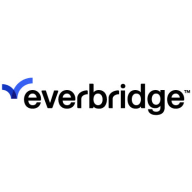


Find out what your peers are saying about PagerDuty, Atlassian, Splunk and others in IT Alerting and Incident Management.


Everbridge IT Alerting is a closed-loop cyber security and incident response automation solution that helps organizations respond to IT Incidents faster and improve teams’ response performance by automating communication, collaboration, and orchestration processes for ServiceOps, IT Security Ops, DevOps, and Disaster Recovery Ops. As a FedRamp-certified solution, IT Alerting capabilities include in-depth scheduling/calendars, interactive & analytical reporting, on-call scheduling, automated escalation, response workflow automation, recording, and much more. The solution is offered as a cloud service based on the secure, highly available, resilient, and globally scalable Everbridge CEM platform.
Learn why 5,400+ enterprise customers trust Everbridge (NASDAQ (EVBG)) with their IT Response Automation Management and IT Alerting solutions; visit ITAlerting.com to learn more or request a demo.
Need Integration with your ITOM, ITSM, SIEM tools?
Plug Everbridge IT Alerting directly into your ITOM, ITSM, SIEM, IT Monitoring tools including ServiceNow or BMC Remedy with our certified, two-way integrations and automatically contact the on-call IT team members, launch conference bridges and automatically escalate to the senior personnel in case of major IT incidents.
Splunk Enterprise Security is widely used for security operations, including threat detection, incident response, and log monitoring. It centralizes log management, offers security analytics, and ensures compliance, enhancing the overall security posture of organizations.
Companies leverage Splunk Enterprise Security to monitor endpoints, networks, and users, detecting anomalies, brute force attacks, and unauthorized access. They use it for fraud detection, machine learning, and real-time alerts within their SOCs. The platform enhances visibility and correlates data from multiple sources to identify security threats efficiently. Key features include comprehensive dashboards, excellent reporting capabilities, robust log aggregation, and flexible data ingestion. Users appreciate its SIEM capabilities, threat intelligence, risk-based alerting, and correlation searches. Highly scalable and stable, it suits multi-cloud environments, reducing alert volumes and speeding up investigations.
What are the key features?Splunk Enterprise Security is implemented across industries like finance, healthcare, and retail. Financial institutions use it for fraud detection and compliance, while healthcare organizations leverage its capabilities to safeguard patient data. Retailers deploy it to protect customer information and ensure secure transactions.
Splunk On-Call offers seamless on-call scheduling and alert escalation with robust third-party integration, providing efficient incident management and resolution capabilities.
Splunk On-Call facilitates effective IT alert management by delivering on-call scheduling, alert escalation, and comprehensive integration with monitoring systems. The platform's capabilities include smooth third-party interactions and the transmogrifier feature, which enhances message customization. Users benefit from efficient alert notifications via phone or text, a user-friendly interface streamlining scheduling, and detailed timelines supporting root cause analysis. It is especially useful in IT environments where quick incident response and communication are critical. Users appreciate the aid in identifying responsible contacts during on-call rotations and deploying on-premises situations involving numerous team members.
What features enhance Splunk On-Call?Splunk On-Call is often implemented in IT departments of large organizations, where teams manage on-call operations and incident responses. Particularly beneficial in sectors requiring rapid reaction times, like tech companies or service providers, it aids developers in swiftly resolving service interruptions to maintain operational continuity and customer satisfaction.